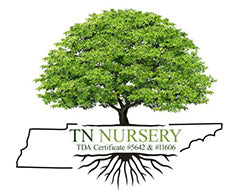The Tennessee ostrich fern's large, majestic fronds are its most unique characteristic. Named for resembling a feather, the fronds unfurl from tight fiddleheads to reveal lush, filly plumes. This plant requires ample moisture, full shade, and rich soil. Deer tend to prefer tastier plants, meaning they will avoid them.
Tennessee Ostrich Fern Does Great In Containers
Smaller ones thrive in a large planter or container on a deck or balcony, provided they are not in full sunlight. They are perennials, so they can be expected to grow in lawns or gardens year after year. Their hardiness makes them ideal for difficult-to-plant regions, including those that receive frost and snow in the winter.
The Tennessee Ostrich Fern Growth
Tennessee Ostrich Fern produces new fronds, called crowns, each year surrounding the previous year's growth. This means that the plant will consistently grow in size year after year. Once it reaches its desired size, it can be easily divided by splitting the root ball and replanting each half. If you're a fan of edible foliage, the plant's young leaves, called fiddleheads, are considered a delicacy and can be cooked or steamed. Try them in a recipe to replace other bitter greens like Swiss chard.
Tennessee Ostrich Fern Reaches 6 Feet Tall
Tennessee Ostrich Fern can be expected to grow to between 3 and 6 feet with lush, green fronds. Its fronds make an ideal backdrop for annual flowering plants and are large enough to delineate different landscape sections. The fronds can also provide a lush green color and texture to cut flower bouquets and arrangements.
The Giant Ostrich Fern Is Hardy
When appearing in the wild, they prefer to grow along riverbeds and sandbars, reaching their runners out to form new crowns that become dense colonies. As such, they are resistant to destruction by floodwaters.
However, care must be taken when planting them in sunny areas, as direct sun exposure can damage their otherwise attractive appearance. While the fern is a popular ornamental plant and has even gained the Royal Horticultural Society's Award of Garden Merit, it also possesses edible fiddleheads, considered a delicacy in many regions.
Growers have been harvesting these ferns for centuries. The best harvests from ferns can be had from late April to early June, starting from the fiddleheads' first emergence and continuing until their stem height reaches approximately 6 inches or 15 cm.
Giant Ostrich Ferns should also be picked while tightly coiled. Once harvested, they can be prepared much like broccoli stems or any other firm, green vegetable. While their taste is unique and wild, it has often been compared to a mix of asparagus, artichokes, and green peas.
Hardy planting zone: U.S.D.A. plant hardiness zones 3-7.
Mature height: Three to six feet (with a spread of nearly equal size).
Bloom season: Non-flowering.
Sun or shade preferred: While the giant ostrich fern will tolerate partial sunlight, it should typically be planted in full shade in northern climates.







